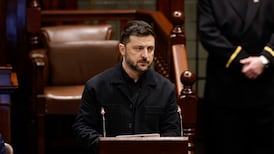The Government is facing a serious split over Fine Gael proposals to dramatically reduce the size of local election areas.
Sources expect that Minister for Local Government Eoghan Murphy will bring a memorandum to this week’s Cabinet meeting with proposed terms of reference to set up a local government boundaries committee.
It will set the number of councillors and the size of electoral areas for the 2019 local elections.
The Independent Alliance, the junior coalition partner, has said its two Cabinet Ministers Shane Ross and Finian McGrath will “fiercely oppose” any such moves. The alliance has said that reducing the size of electoral areas will adversely affect Independent councillors and those representing smaller parties, while giving a disproportionate benefit to the biggest parties.
An internal meeting held last month involving representatives from Fine Gael and the Independent Alliance descended into what sources described as a “shouting match” between the camps on the issue.
Reversing changes
Mr Murphy is to effectively propose reversing changes made by a boundary committee in 2013 to increase the number of councillors in each electoral area.
Some election areas were “absolutely massive”, Mr Murphy said, making it “impossible” for councillors to adequately represent their constituents.
He received strong backing from Taoiseach Leo Varadkar, who said that during the last government the areas had been increased to suit the Labour Party.
“The reason we had a big increase in the number of eight-seaters and nine-seaters and 10-seaters five years ago was very much at the behest of the Labour Party, who believed in doing so at the time that they would help more Labour councillors to hold their seats,” Mr Varadkar said. “That actually didn’t happen.”
Mr Varadkar said he was “very much of the view that when it comes to deciding the terms of reference of this commission, it shouldn’t be what’s good for Fianna Fáil or Fine Gael or the Independent Alliance or anyone else”.
“What’s important is that we have local electoral boundaries that reflect the communities that people live in.”
Compensatory measure
In 2013, the minister for the environment increased the number of county councillors from 883 to 949 as a compensatory measure following the decision to abolish town councils. He also agreed to increase the size of most electoral areas in the State. These are the districts or locality within each council areas which councillors represent.
Before 2013, most electoral areas had between three and seven seats. After the changes, that was increased from six to 10. The majority of local electoral areas elected six councillors (66); there were 23 seven-seaters; 23 eight-seaters; 13 with nine seats and six with 10.
The net effect of the changes was that there was a “bounce” of representation for smaller parties and for Independents. Despite the move being designed to assist Labour, it lost a large number of seats in the 2014 elections.














